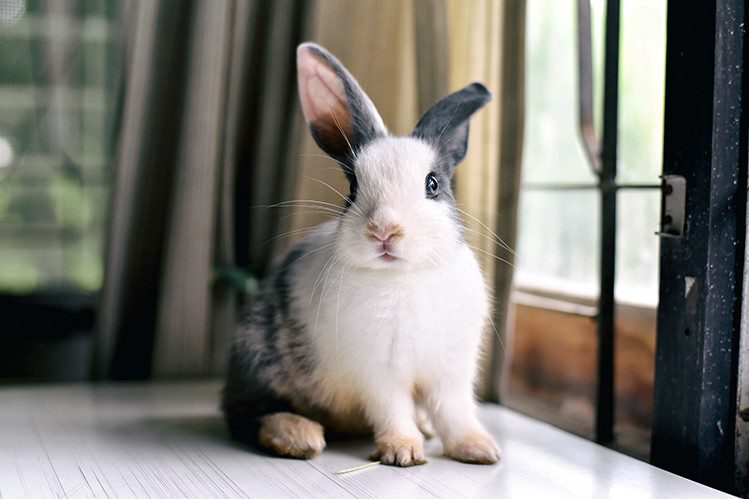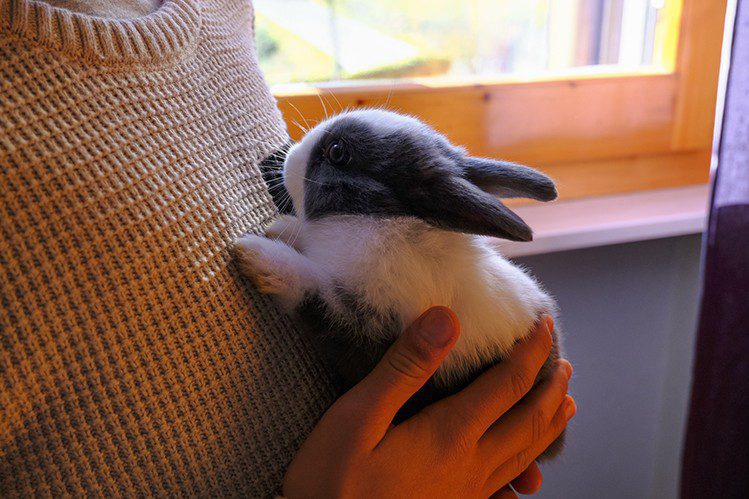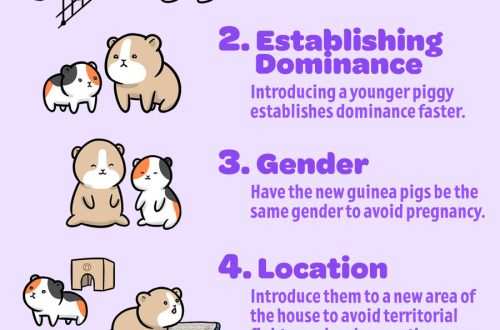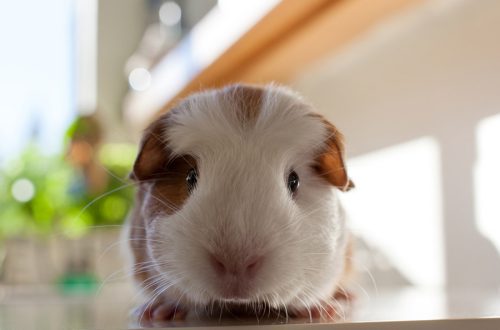
What you need to know about the behavior of rabbits?
Rabbits are not the most common pets. In character and instincts, they differ significantly from cats and dogs. It is important to study the nature and habits of rabbits in order to know what your eared friend wants and feels.
Decorative rabbits are artificially bred for home keeping as pets. They differ from their wild counterparts and meat breeds in size, weight and appearance. So, the “decorators” have features of appearance (hanging or short ears, fluffy fur, small size (up to 3 kg).
If the rest of the rabbits feel great in the wild and tolerate cold well, then the decorative baby is not prepared for harsh conditions and may die.
Any future rabbit owner should learn about the habits of the eared rabbit in order to be prepared for the unusual behavior of the rabbit and know how to handle it and how not.
Consider the main points related to the habits of domestic rabbits.
- Communication with a person
1. When a rabbit licks a person’s hands, he shows his disposition towards him. There is an assumption that the animals can lick their hands, because. they like the taste of salty sweat, but they really don’t.
2. If the eared craves attention or games, he will push the person with his muzzle, “butt” him. Some put their heads under the palm of the owner, so that he stroked and caressed.
3. Biting is a sore point for many owners. During the game, the stomp may slightly bite you: there is nothing to worry about if the pet does not hurt. But if the rabbit bites often, for no apparent reason, aggressively and to the point of blood, this is not normal. Try to change the principle of communication with the rabbit, think about what you are doing wrong. Perhaps he is afraid of you or angry, because. you forcibly pulled him out of hiding or frightened him with a sharp sound. Either it’s all about hormonal surges, and castration-sterilization will fix the situation.
4. Rabbits are not cats. They must not be squeezed because of their fragile skeleton, they must not be allowed to fall from a height of human height and higher (they can be injured and even die), they must not be torn off the ground and put on their knees without special need. Only a small percentage of domestic rabbits themselves jump on a person’s lap and ask for hands. But most of them are not happy with tactile contact.
5. Rabbits are by nature victims. And although predators do not threaten them in the house, there is no escape from the genetic memory. When you raise the eared above the floor, he perceives this as his defeat, as if he was caught by a wolf or a fox. For a shy rabbit heart, this is stress. Over time, the pet can get used to such manipulations and treat them more calmly, but it’s better not to touch the rabbit once again.
6. Any pungent odors from a person (tobacco, perfume, etc.) can be perceived negatively by a rabbit. Until you get rid of the obsessive smell (including the smell of other animals), the stomp is unlikely to communicate with you.
7. The trust of a rabbit is not so easy to win. Some pets may not open up to their owners for years. In order for an eared friend to start trusting you, you need to: a) respect his personal boundaries and not disturb him during moments of rest; b) behave as carefully and quietly as possible: rabbits are frightened by loud sounds and sudden movements; c) spend more time and play with your pet, so he will get used to you faster; d) give tasty treats from the hands, but do not overdo it so as not to harm the rabbit.

- Instincts
1. Instincts are inherent in absolutely any living creature, and rabbits are no exception. The manifestation of some instincts may not always please a person.
2. Since rabbits are burrowing animals, having a shelter is very important for them. The eared must have a place where he rests, is in peace and quiet, or hides in moments of fright. If the rabbit does not have a house or a dark corner, this will cause stress and anxiety.
3. By the way, the rabbit house should have two entrances. According to this principle, animals build their burrows in the wild. This is done so that the pursuing predator does not drive the rabbit into a corner, and the eared one has a chance to escape through an additional exit. Therefore, if you bought a wonderful house for a rabbit, and the pet was afraid to go into it, this is not harmful – these are instincts.
4. When a rabbit stands on its hind legs and stretches its neck, it means that something has interested him, and he wants to examine it “from above”.
5. Females have such an oddity as a false pregnancy. An unfertilized rabbit can behave exactly like a pregnant one: tear fur out of her chest, put hay in her mouth and build a nest, behave wary and aggressive. To avoid this, you need to sterilize your pet as soon as she is six months old. It is better to do this with a ratologist – a veterinarian who specializes in rodents and lagomorphs.
6. Rabbits – those are still kopush. They love to roam and dig blankets, clothes, towels, hay, etc. And although the rabbit does not pursue any goal, he will do it with great enthusiasm, because his wild counterparts do it when they build minks for themselves.
7. Don’t let your rabbit eat his own feces. They contain useful elements necessary for the health of the pet. While eating feces can be a wake-up call for other animals, it is natural for rabbits.
8. When a rabbit appears in the house, the owners should secure the territory and protect the property from “hooligan” rabbit teeth. Be sure to remove all wires and cords; close access to sockets and electrical appliances; remove indoor plants that can be poisonous to a pet out of reach. Damage to the wallpaper and wooden legs of tables and chairs is inevitable. The rabbit will sharpen its teeth on vertical surfaces. it reminds him of a tree from which to gnaw the bark.
9. The rabbit is a territorial animal, especially the female. They get used to their territory and painfully perceive the change of scenery and moving. Putting one rabbit on the territory of another is fraught with eared quarrels and even injuries. It is better to introduce relatives in neutral territory.
10. If a rabbit rubs his chin on some object, he marks it like that. Sometimes a pet may rub its chin on the treat you offered, thereby saying that it doesn’t want to eat now, so it will leave it for later.
11. During a fright, rabbits behave differently. They can give a tear and hide, or, conversely, freeze so as not to draw attention to themselves. In no case should a rabbit be scared: it is not uncommon for them to die from a broken heart.
- Feeling and mood
If you know the body language of rabbits, then it is not difficult to understand what he wants, feels, what he is worried about.
Rabbits have a very insidious feature. They will hide health problems to the last. The fact is that in the wild, rabbits live in packs, and if one of the family members gets sick, the rest will do everything to drive the poor fellow away. It’s cruel, but that’s nature. A sick and weak animal can infect, attract a predator with the smell of its blood, eat a lot of food that is intended for healthy and young individuals. Therefore, rabbits, in order not to become outcasts, try to endure pain and outwardly not show in any way that something is wrong with them. In home conditions, these cunning people are guided by the same principles. Therefore, it is sometimes not so easy for owners to determine the emerging disease in a pet.
As you already understood, rabbits are modest and silent creatures. They practically do not make sounds, unlike dogs and cats. But there is a sound that can come from a rabbit and signal an alarm to the owner – this is a piercing cry that looks like a screech. Rabbits scream only in very extreme cases: when they are unbearably hurt, very scared, or before death.

There are a few more sounds that can come from an eared comrade:
Grunting, or rather humming. You can hear it when the rabbit cuts circles around your legs. This means the sexual attraction of the animal or its strong interest in something. Also, the rabbit can grunt with pleasure when he eats something very tasty.
Grunting or moaning. The pet publishes them when it is afraid or dissatisfied with something. For example, he does not want to let the owner cut his claws or comb out his fur.
Growling. Yes, yes, a rabbit in moments of anger and aggression can growl. Not quite like a dog, but also intimidating.
Grinding of teeth. This is both a good and a bad signal. Good – when the rabbit rubs his teeth together in moments of pleasure, for example, when the owner strokes him. This has been compared to the purr of a cat. And the bad one is when the pet grunts its teeth for no apparent reason. Perhaps the rabbit is in pain. In this case, he will sit in a secluded place, his body will be tense, his eyes bulging. It is worth sounding the alarm if the eared sits for so long, does not go to the toilet and does not even eat his favorite treats.
Watch out if your rabbit hits the floor with its paw. This is a very loud and distinct knock, which means danger and fear. Surely something scared the pet, so you need to approach him and calm him down with a gentle stroke or a tasty treat. But if the tramp hid in the house, in no case do not pull it out by force. Better leave him alone, he will come to his senses soon.
The pet lies on its tummy, stretching out its paws – do not disturb him, he is resting like that.
By the ears of a rabbit, you can determine the whole palette of his emotions and moods. Of course, this applies to stick-eared fluffies, which, unlike lop-eared rabbits, can move their ears in different directions. So, if the pet’s ears are in a calm state, do not stand straight and are not pressed to the back – this is calmness and tranquility. If the rabbit pricked up his ears, he was alert, listening. Ears tightly pressed to the back are a sign of fear, feeling unwell, or obedience to another rabbit.
The nose of a rabbit is also a kind of indicator of mood. If it twitches quickly and continuously, the rabbit is showing curiosity, trying to sniff something. And if the nose is motionless or twitches very rarely, then the pet is calm, he is not interested in anything, or he is sleeping.
By the way, about sleep. Rabbits sleep in a special way, not like cats or dogs. The wild rabbit is in constant tension and expectation of danger, so he sleeps with his eyes open. Domestic rabbits also often sleep this way. They saw that your pet plopped down on its side and is resting with its eyes closed – it means that it completely trusts you and feels safe in your home.
- If the rabbit began to rush around the room like a madman, depicting all sorts of “pas” in the air, don’t be scared. Your pet is happy and cheerful. He feels safe, he does not need to be afraid of predators and paint with life, getting his own food, so he can jump and play enough.
This is only a small part of what these gentle, glorious and funny creatures are – rabbits. Be sure to study the habits of decorative rabbits in order to better understand your eared friend.





